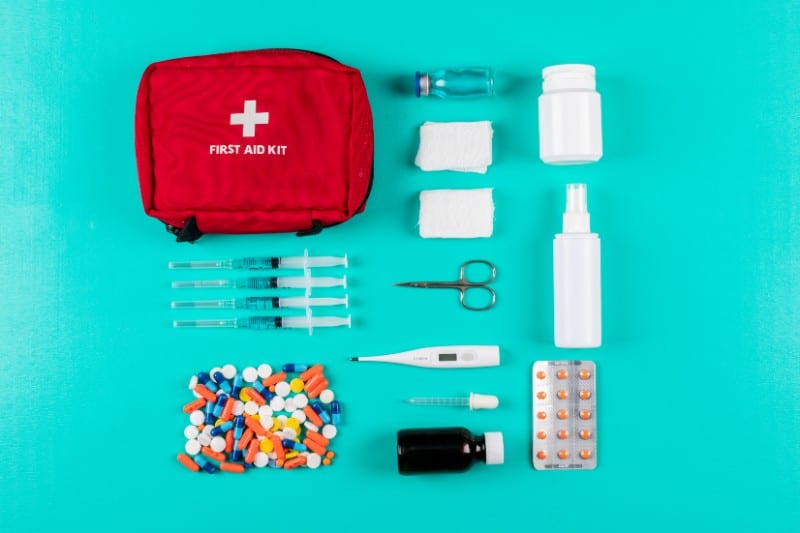What do you need for a good home first aid kit?
Having a good home first aid kit is very essential. For people living with kids or elderly, it is a necessary item and can save you from unnecessary panic. Even if you are young, living with your partner or roommates, having a first aid kit can always come handy. It is inevitable that one of you may suffer an injury or need some medicine. A good, complete first aid kit can guarantee that you won’t need to run out to the pharmacy at the last minute. Many parents even carry a first aid kit in their cars or vehicles. This simplifies your life and prevents you from searching for supplies during a time of need or injury.
Almost everybody will need a first aid kit during some point of their lives. Whether you may need a basic or comprehensive kit, depends on your age, health, and family members. It also depends on your medical training, access to facilities, and how far you are from professional help. You can purchase readymade home first aid kits from a general store or pharmacy. But if you want customized and special kits, you will have to make one at home. You can buy all items you need from a medical store. For those who are unsure about the correct items, we have comprised an extensive list of items to add and include in your home first aid kit. This kit can obviously be expanded or reduced, if your needs may vary as time goes.
Choose a large plastic container or cloth bag as the base of your home first aid kit. Have smaller containers or dividers to create small compartments within the kit. Like any medication in the household, ensure the kit is out of access or reach for children. Store it in an easily accessible place for adults like a high kitchen cabinet or a shelf in the living room. Regularly check and update the items in the first aid kit. If any medication or cream has expired, please throw it and replace it with a fresh one. Ensure the packets and containers are tightly sealed and dry. Clean the kit regularly to avoid moisture, dirt, and dust from settling in.
Adhesive Strip Dressing- Most commonly used items in a first aid home kit, you can include cartoons or printed versions for kids. You can also get waterproof dressings for regular use. These are excellent for minor cuts, shoe bites, or skin injuries. Do not use them to cover burns or grazes.
Wound Dressing- These are different from band-aids. You get dressings for specific wounds like burns or insect bites. Having a few around is always a good idea, especially for people who work with plants or spend their time outdoors. They also help control bleeding. You can purchase them in different sizes.
Elastic and Non-Elastic Bandages- Elastic crepe bandages are good for providing support and keeping wound dressings in place, while non-elastic bandages can hold splints and restrict movement. Crepe bandages are good for strained muscles, joint pains, or body aches. For people who work out regularly and intensively, this is a must to include in their home first aid kit.

Saline- Saline contains sodium chloride and water, acting as a cleaning solution. It is used to clean wounds and flush minor irritants like dust, sand, and insects from the eyes.
Burn Relief Cream/Gel- It is recommended to have burn relief cream or gel for burns, swelling, rashes, and itchy skin. It also comes handy when there is no cool running water. This is a good way to calm minor burns until you can get medical help.
Pain relief medication- Paracetamol, Ibuprofen, and Advil for children and adults should always be included in your home first aid kit. You can include other medications such as for upset stomach, body pain, cramps, and headaches if you wish. Do check the expiry and replace them when they have expired.
Thermometer- This is required to check the temperature and note down fluctuations of your body during fevers and viral flu.
Tweezers- You will need tweezers to remove splinters or particles from wounds. Invest in a pair with elongated pointed ends designed specifically for this.
Swabs and Disposable Gloves- Swabs can be used to clean your wound, disinfect the area, and surrounding skin. You may need to use disposable gloves while treating a wound or burn to avoid infection to your skin. It is also recommended to use gloves when handling a patient suffering from fever or flu.
These are the basic items that comprise a good home first aid kit. You can add other items such as antibacterial solution, wipes, muscle relief patches or sprays, blood pressure machine, balm, scissors, and cooling patches. It depends on your family type, needs, and your knowledge of medicine. Remember to always consult a doctor or read up before administering any medicine or treatment to children.

